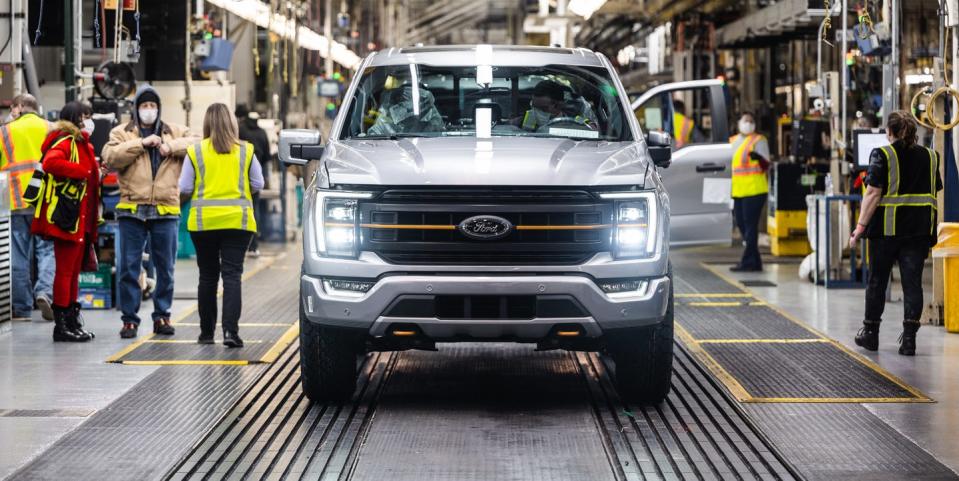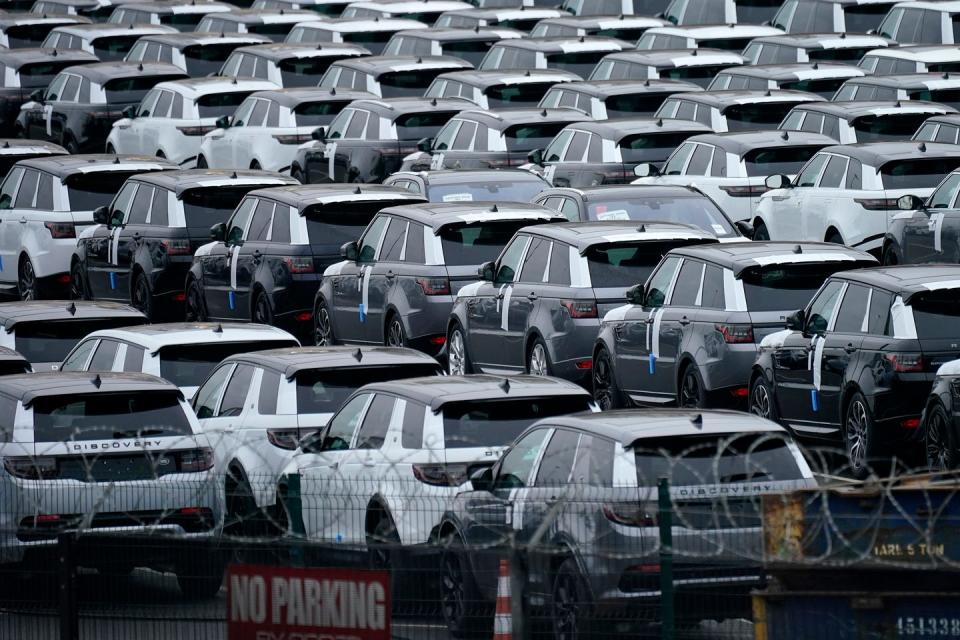Six to Eight Weeks’ Delivery Is the New Drive-It-off-the-Lot

Ford offers up to $1,000 direct to customers for “custom orders” of F-150, Mustang, Ranger, Bronco Sport, Explorer, Edge, and Expedition.
Some mid-Atlantic region Toyota dealers are promoting Toyota Reserve, which urges customers to pre-order using the online configurator.
One Stellantis dealer advertises that while some of its competitors charge fees for the custom order, “your order will be completely free of charge,” which likely means you’ll just pay sticker.
Instant gratification from driving your new car or truck off a lot after a few hours dickering with the salesperson over price is done, for now. For two years of pandemic-induced supply shortages, it has become nigh impossible to find the new model in the spec you desire.
Your only choice is likely than not to be a fully loaded model—and don’t be picky about paint color—because why would a major manufacturer assemble anything less than silver Deluxe GT SEL Editions, what with a limited supply of computer chips?
Ford Motor Company and some Toyota and Stellantis dealers have a workaround: Bring back the order sheet and make consumers wait up to eight weeks for a factory pre-order. Ford is offering up to $1,000 direct to customers—not dealerships, who might keep the cash—for “custom orders” of F-150, Mustang, Ranger, Bronco Sport, Explorer, Edge, and Expedition.
Some mid-Atlantic region Toyota dealers are promoting Toyota Reserve, which urges customers to pre-order using the online configurator. If the model with a Reserve (or Lexus Monogram) customer's exact order already is in production, the system tags that vehicle and gets it directly to that customer through his or her dealer. Toyota launched this program in 2019 and considers it a “flexible sales experience” rather than pre-ordering.
Pre-orders have been around a long time for low-volume specialty vehicles prior to their launch, and lately they’ve been used to build anticipation for upcoming battery-electric models including the GMC Hummer, Cadillac Lyriq, and Ford F-150 Lightning, says Sam Fiorani, vice president of Global Vehicle Forecasting for AutoForecast Solutions.
“‘Build to order’ reduces the cost to dealers for holding inventory and reduces the need to push customers into specific vehicles and incentives,” Fiorani explains. Dealerships looking to cut the costs they pay to their manufacturers for floorplans have long considered this a good idea, but none of the big, established automakers were “willing to make the leap and risk the loss of market share to other brands where they offered immediate delivery.”
Could the coming EV onslaught change that? EV startups like Rivian and Lucid are intent on building market share by using the Tesla playbook of minimal dealership investment and the build-to-order model.

Chrysler-Jeep-Dodge-Ram dealerships across the nation under the Stellantis umbrella are promoting “custom order” vehicles, giving your pre-order priority over stock dealership inventory on order in the factory. One dealership in the Northwest advertises that while some of its competitors charge fees for the custom order, “your order will be completely free of charge,” which likely means you’ll just pay sticker, though at least your Dodge Challenger won’t look just like the one next to it at the stoplight. The dealership adds that “the time it takes to complete your order depends on what customizations you have requested.”
Why shouldn’t big, established automakers, which already are posting bigger profits off much lower volume during the pandemic, adapt this “disruptor” strategy? If the future of the automobile is higher sticker prices and lower production anyway, as autonomous EVs begin to take over, the only obvious downside might be fewer employed at assembly plants.
Perhaps the big legacy manufacturers could play both sides of the sales fence, splitting between big inventories of high-volume commodity models—such as pickup trucks and compact crossovers—while emphasizing pre-orders for premium and high-end electrics, as a mechanism to boost sales for customers who likely could wait a bit longer for the car they really want.
But legacy automakers—despite their pronouncements—will not be quick to abandon their old tricks.
“If these disruptors take too much market share,” Fiorani says, “manufacturers can push more product to (their large dealer networks) to shorten the delivery time. … This over-supply will lead to lowered prices, wider selection, and increased incentives.” That sounds like an automotive retail model reverting to its past.
What would it take to get you to drive home this car today? No doubt legacy automakers will return to overproduction and full dealer lots once our economy returns to “normal.” But there’s a clear opportunity here for them to change the sales paradigm for new EV models through the ‘20s, particularly while they try to sort out the problem of how to procure rare materials needed to make the batteries.

 Yahoo Autos
Yahoo Autos 